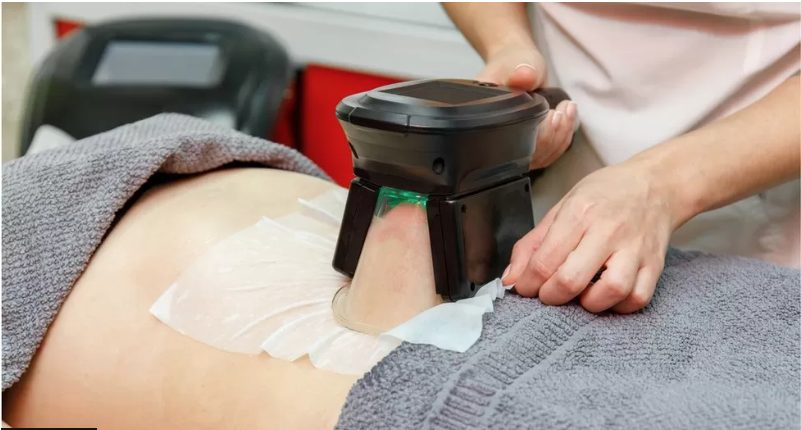Cryolipolysis: Modern Fat Freezing

Cryolipolysis: What is it?
In order to decrease fat accumulation, a method called cryolipolysis involves freezing the fat cells in particular body areas. This non-surgical procedure, commonly referred to as “fat freezing,” targets localised fat bulges that are resistant to conventional weight-loss techniques like diet and exercise. Obese people are not supposed to use it. This method has a patent that belongs to the CoolSculpting company.
Which bodily parts are the most appropriate for cryolipolysis?
The submental area (beneath the chin), upper arms, inner and outer thighs, belly, hip/flank (also known as “love handles”), upper back (often referred to as “bra bulge”), lower back, and sub-gluteal area are among the body parts where cryolipolysis has been approved by the FDA (underneath the buttocks).
Cryolipolysis: How does it work?
Cryolipolysis is often carried performed at a doctor’s office or outpatient facility. During the cryolipolysis procedure, the patient remains awake as a skin-marking pencil is utilized to delineate the area of treatment, taking into account the size and shape of the fatty tissue.
Then, a handheld device called an applicator is used to freeze the layer of fat cells located beneath the skin. Before suctioning or vacuuming the fatty bulge into the applicator’s hollow opening, a gel pad is placed on the region being treated to protect the skin. During this process, the patient could feel a tugging or pulling feeling, extreme cold, tingling, stinging, ache, or cramping. Once the region becomes numb as a result of the cooling process, these sensations progressively fade over the course of 5 to 10 minutes. The desired temperature range for the fat layer is 30.2 to 39.2 degrees Fahrenheit.
An region may require up to an hour of treatment. The applicator is removed after the process, and the treated region could be rubbed for a short time to aid in the breakdown of the fat cells.
How can fat cells get killed off?
The method is founded on the observation that fat cells are more vulnerable to the effects of low temperatures than other cell types, such as skin cells. The fat cells are harmed by the cold temperature, which results in their death and, as a result, sets off the body’s inflammatory reaction. Macrophages, a kind of white blood cells involved in the immune system of the body, are drawn to the site of damage to remove the body’s dead fat cells and debris.
When will I start to see effects with cryolipolysis and how much localised fat can I expect to lose?
Studies show that cryolipolysis often reduces the targeted fat deposits by 15% to 28%, and you may start to notice improvements as soon as 3 weeks after treatment. The majority of the gains often become apparent two months following the treatment.
In summary, CoolSculpting successfully eliminates stubborn fat in problem locations. The body gets rid of the frozen and decomposing fat tissues over the course of 4-6 months. The procedure also produces outcomes that last. It destroys fat cells, so they won’t reappear.
Interested about Cryolipolysis? Read here.